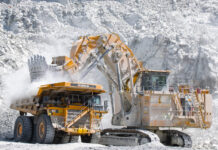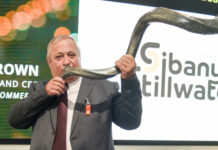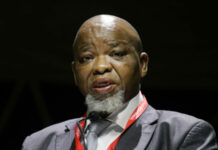
INDONESIA has a habit of minting billionaires. The listing of PT Amman Mineral Internasional was one of the best IPOs globally last year. At $750m it topped the list of debutants to the country’s modestly sized equity market that included Harita Nickel and Merdeka Battery Minerals, which collectively raised $1.25bn via IPOs.
They have mining in common where a concerted push towards battery minerals is giving fresh impetus to a nation known for its coal.
One consequence of the IPO rush is a bevy of new billionaires. Amman Mineral chair Agus Projosasmito was worth $2.7bn after the firm’s stock rose 269%. Five of the company’s other co-investors are also billionaires, each with a link to Anthoni Salim, the tycoon atop Salim Group, one of Indonesia’s largest conglomerates.
“Without connections, you can’t enter this industry,” Siwage Dharma Negara, a senior fellow with Singapore-based think-tank ISEAS-Yusof Ishak Institute told Bloomberg in October. This is a rule of the game Omnia Holdings’ explosives business, BME, is taking to heart. In April it bought shares in Indonesia’s second-largest explosives company, MNK.
BME CEO Ralf Hennecke estimates that half of the company’s business will be from outside Africa in a few years. A “fundamental chunk” of this will be from Indonesia. “We want to follow the money, where most of the exploration happens, where most mine pipelines are, and the sector is growing,” says Hennecke in an interview.
“The nickel sector in Indonesia is exploding. It has become the top nickel producer and we will benefit at some point.” Thanks to new smelting technology, the Asian country has liberated millions of tons of low-grade nickel resources. The impact has been seismic, driving down the nickel price more than 40% last year and forcing some of the world’s mining giants to shutter mines, including Glencore.
Hennecke says BME views its Indonesia investment as in its initial phase. Integrating culturally is obviously a key challenge. Understanding the scope of the promise is another.
But the importance of BME to Omnia’s upside is clear. Mining income outstripped contributions to operating profit of the agriculture and chemicals divisions in the six months ended September. Of this, more than half was from international business.
There are good reasons for this shift in emphasis. Omnia faces the same infrastructural pressures as other agricultural and mining businesses in South Africa.
Seelan Gobalsamy, Omnia CEO since 2019, says infrastructure is unavoidably the discussion. “I don’t think you’re going to find a player in this market that doesn’t talk about Transnet; that doesn’t talk about port disruption, that doesn’t talk about electricity.” Add to that incoming threats such as road and water supply disruption. “That’s going to play in our business quite significantly,” he says.
Gobalsamy thinks Omnia will grow in South Africa — but not because the market is growing. “It’s because we’re taking away market share or we’re growing into spaces we are not in.” BME is the largest supplier of explosives to opencast mines in Southern Africa, an area that still represents opportunity. But increasingly, the allure of more distant markets may prove too difficult to resist.
He agrees that the emergence of Saudi Arabia, with its powerful nation state balance sheet and an open mind on East/West political affiliation, is too important to ignore. While Indonesia is on the firm’s books, so are traditional Western markets.
In October, BME bought a minority stake in Hypex Bio Explosives Technology, a Swedish company with non-nitrous explosives technology low in carbon. It could “totally transform” the global explosives sector. The company has another partnership in Canada.
“We’ve tried to take on the challenge of operating in very difficult frontier markets, very complex political markets in Zimbabwe, and in some instances, it works. In other instances, it doesn’t go according to plan. But we tackle it,” says Gobalsamy.
A version of this article first appeared in the Financial Mail.











